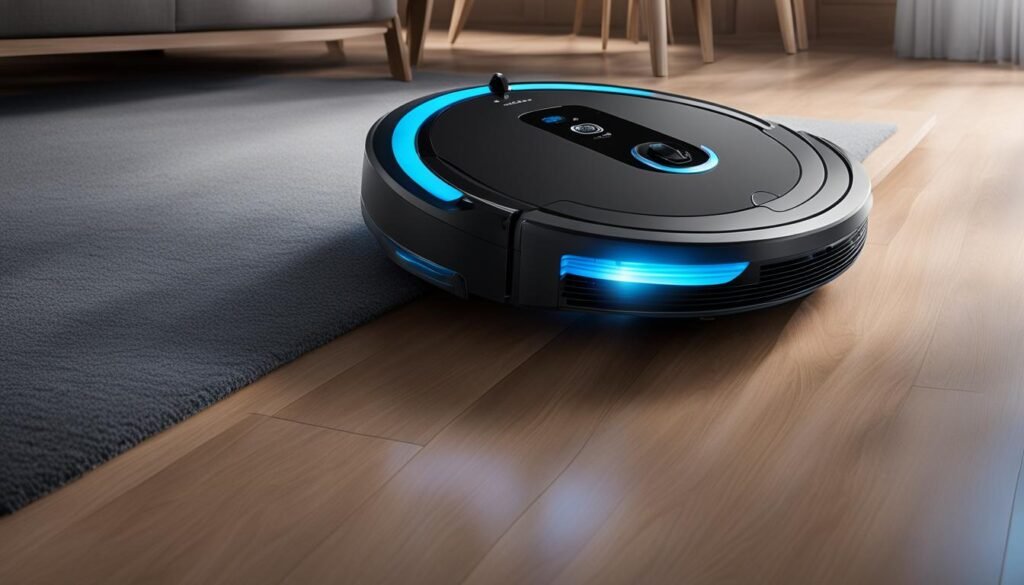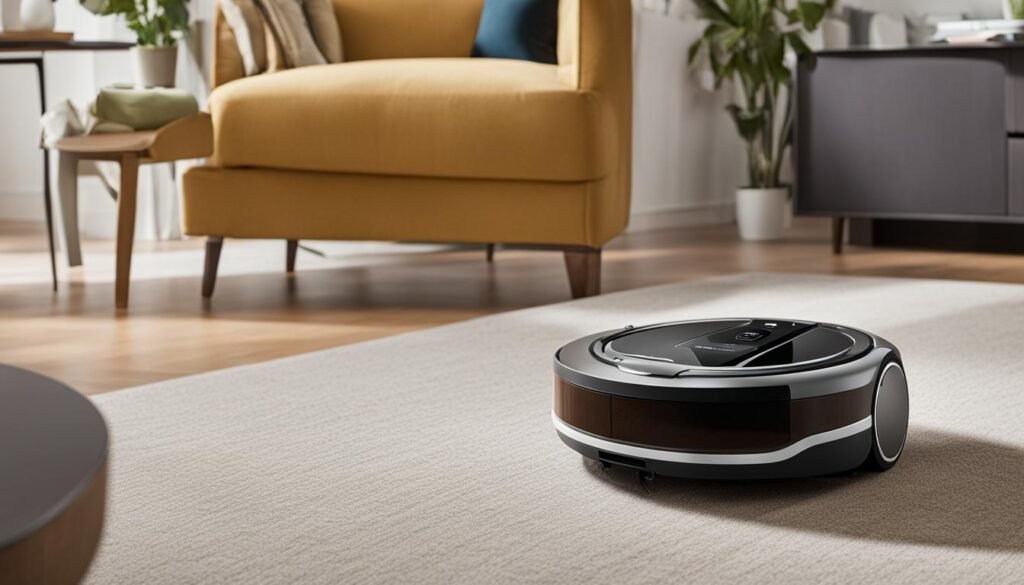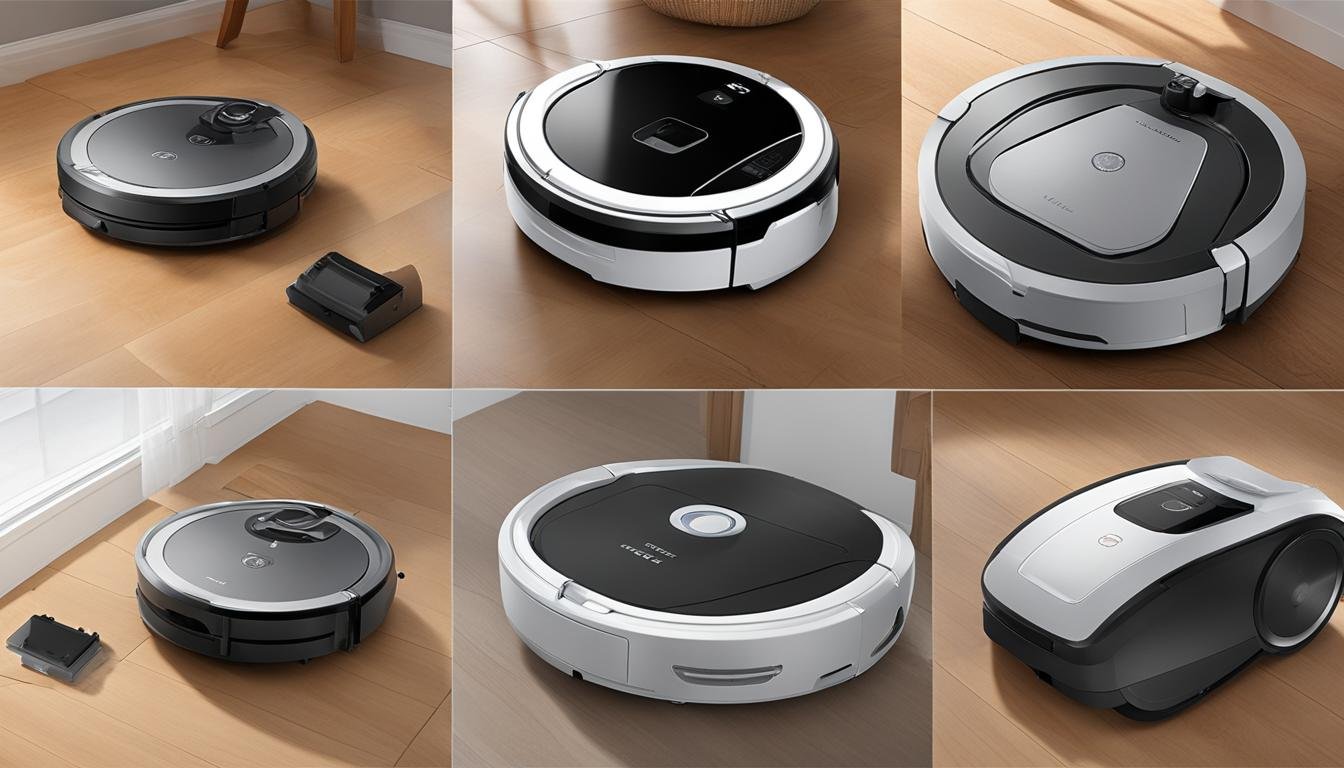Hello, I’m here to tell you about the fascinating world of robot vacuum cleaners and their flexible joints. Have you ever wondered how these machines are able to navigate your home so effortlessly? Well, one of the key factors that contribute to their exceptional performance is the number of flexible joints they possess.
Take, for example, the iRobot Roomba i7+. This advanced robot vacuum cleaner features four degrees of freedom in its robotic arm. These flexible joints, known as revolute joints, provide the necessary movement and adaptability for the arm to perform various cleaning tasks with precision.
In addition to the robotic arm, the vacuum system of the Roomba i7+ comprises 3D-printed parts, such as a fan, collector box, and cover of the collector box. The mobile platform of the robot utilizes DC geared motors with encoders and a four-wheel-drive platform. These components work in harmony with the flexible joints to deliver a seamless cleaning experience.
So, just how many flexible joints does a robot vacuum cleaner have? In the case of the iRobot Roomba i7+ and many other high-performance models, multiple flexible joints are strategically incorporated to ensure optimal movement and adaptability.
Key Takeaways:
- Robot vacuum cleaners, like the iRobot Roomba i7+, have multiple flexible joints to provide movement and adaptability.
- Flexible joints, known as revolute joints, are essential for the robotic arm to perform cleaning tasks with precision.
- The vacuum system of a robot vacuum cleaner also includes 3D-printed parts and a mobile platform with DC geared motors.
- Having multiple flexible joints allows robot vacuum cleaners to navigate different cleaning tasks and cover a larger area.
- While the number of flexible joints enhances the performance of robot vacuum cleaners, there are also limitations to be aware of.
The Benefits of Flexible Joints in Robot Vacuum Cleaners
The presence of flexible joints in robot vacuum cleaners offers a host of benefits. Let’s delve into the advantages that these flexible joints bring to the performance and functionality of these robotic cleaners.
Versatility and Adaptability
Robot vacuum cleaners equipped with flexible joints possess increased versatility, allowing them to adapt to various cleaning tasks without the need for significant modifications. These flexible joints empower the robots to navigate different surfaces, such as hardwood floors, carpets, and tiles, with ease and efficiency.
Enhanced Speed and Precision
The flexibility of the joints in robot vacuum cleaners contributes to improved speed and precision during cleaning operations. This attribute enables the robots to maneuver smoothly around obstacles, corners, and furniture, ensuring thorough cleaning in hard-to-reach areas.
Expanded Coverage and Heavy Lifting
With multiple flexible joints, robot vacuum cleaners can cover a larger range, efficiently cleaning larger rooms or even entire houses autonomously. Additionally, these flexible joints enable the robots to handle heavy lifting tasks, such as picking up small debris or even larger objects that may obstruct the cleaning path.
Combined, these benefits make robot vacuum cleaners with flexible joints highly efficient and capable of performing a wide range of cleaning tasks, catering to various cleaning needs.

Limitations of Robot Vacuum Cleaners with Flexible Joints
While robot vacuum cleaners with flexible joints offer many advantages, they also come with certain limitations. It is important to consider these limitations when using and maintaining robot vacuum cleaners with flexible joints.
- Points of Weakness: The more degrees of freedom a robot vacuum cleaner has, the more points of weakness it possesses. Each joint is a potential point of failure, and if one joint malfunctions, it can affect the overall functioning of the robot. This makes maintenance and repairs more complex and requires careful attention to each individual part.
- Complex Maintenance: Robot vacuum cleaners with flexible joints require regular maintenance to ensure optimal performance. Each joint and its associated components need to be properly cleaned, lubricated, and checked for wear and tear. Failure to do so can result in decreased efficiency and potential breakdowns. Maintaining all the joints in good working condition can be time-consuming and challenging.
- Expertise Required: Operating a robot vacuum cleaner with flexible joints can be complicated and may require the expertise of a trained technician. The intricate mechanisms and complex programming involved in these robots can make troubleshooting and repairs difficult for the average user. Professional assistance may be necessary in the event of any technical issues or malfunction.
Despite these limitations, robot vacuum cleaners with flexible joints continue to be a valuable tool for efficient and effective cleaning. Being aware of their limitations allows users to make informed decisions and take appropriate measures to ensure the longevity and optimal performance of their robot vacuum cleaners. Regular maintenance, careful handling, and professional assistance when needed can help mitigate these limitations and maximize the benefits of robot vacuum cleaners with flexible joints.

Conclusion
Robot vacuum cleaners with flexible joints, such as the iRobot Roomba i7+, offer advanced cleaning capabilities and increased efficiency. The presence of multiple flexible joints allows these robots to adapt to different cleaning tasks and cover a larger range. By utilizing robot vacuum cleaners with flexible joints, users can enjoy the convenience of automated cleaning while ensuring their home remains spotless.
However, it is important to be aware of the limitations that come with having flexible joints in robot vacuum cleaners. The increased complexity of maintenance and the potential for points of weakness should be considered. Regular maintenance and care are essential to ensure the longevity and proper functioning of the robot vacuum cleaner.
Despite these limitations, the benefits of robot vacuum cleaners with flexible joints make them a valuable tool for efficient and effective cleaning. Whether it’s navigating tight corners, reaching under furniture, or adjusting cleaning patterns based on the surface, the flexibility offered by these joints enhances the cleaning capabilities of the robot vacuum cleaner.
FAQ
How many flexible joints does a robot vacuum cleaner have?
Robot vacuum cleaners can have multiple flexible joints, allowing them to move and adapt to different cleaning tasks.
What are the benefits of flexible joints in robot vacuum cleaners?
The presence of flexible joints in robot vacuum cleaners provides increased versatility, speed, and precision. They allow the robot to adapt to different tasks and cover a larger range, making them highly efficient.
What are the limitations of robot vacuum cleaners with flexible joints?
Robot vacuum cleaners with flexible joints have a higher risk of points of weakness and may require more complex maintenance. Operating them can also be complicated and may require the expertise of a trained technician.
What can I expect from robot vacuum cleaners with flexible joints?
Robot vacuum cleaners with flexible joints, such as the iRobot Roomba i7+, offer advanced cleaning capabilities, increased efficiency, and the ability to handle a wide range of cleaning tasks.





Leave a Reply